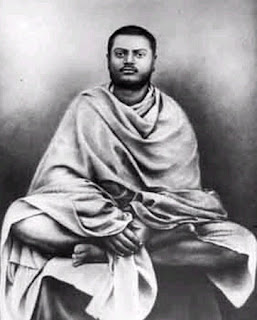Vivekananda and his love for humanity - part 4
Do we not find the echo of the same love in Narendranath? Of course, else how the same love could be magnified in Swami Vivekananda’s personality? From taking care of an injured soldier, to giving his new clothes to mendicants, to making sure that a friend is able to sit for the examination, his love was probably more channelized before coming out in a torrent or gush in the later period. How do we forget the memorable character in The Gospels of Sri Ramakrishna, of Hazra, whom probably only young Narendra sympathized with, knowing very well that Hazra was somewhat devious in nature. This same love enabled him to carry the shoes of Swami Sadananda, then Sarat Chandra Gupta, on his head, when the latter was unable to walk wearing them and yet was unwilling to leave them behind. Swami Sadananda never forgot that incident. In his later days, when he returned to India, the young Brahmacharins and Sannyasins and his own disciples like Sarat Chandra Chakravarty, the author of the D...



